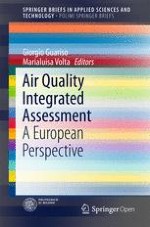This book is open access under a CC BY 4.0 license.
This book reports on the results of an extended survey conducted across Europe within the framework of the APPRAISAL FP7 project to determine the extent to which an integrated assessment approach to air quality is being adopted, on the one hand, by regional and local authorities to develop air quality plans and, on the other, by researchers. Following a detailed analysis of the role and structure of the components of an integrated assessment study, the results of the survey are considered from a variety of perspectives. Above all, the book discusses the new light the survey sheds on emission abatement policies and measures planned at regional and local scales, and on their synergies/trade-offs with measures implemented at the national scale. Detailed consideration is given to the currently available modeling methodologies for identifying emission sources, assessing the effectiveness of emission reduction measures, and evaluating the impacts of emission abatement measures on human health. Current strengths and weaknesses revealed by the survey are explored, and the application of an integrated assessment tool in two case studies (in Brussels and Porto) is discussed. The book will appeal to all those interested in the use of integrated assessment in connection with the sources, effects and control of air pollution.
